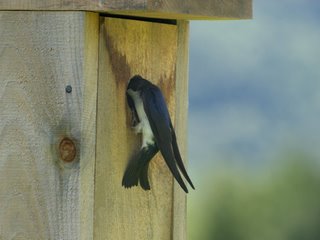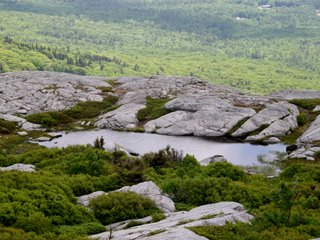Monday, June 26, 2006
Friends and Relatives: June 26, 2006
The first three photographs, taken on April 15, 2006 in Wellington, the capital of New Zealand, show our friends David and Dana Orsman. Dave is a New Zealander who has spent much of the last decade living in the US. He's a climber, hiker, cyclist and runner who met Dana, a native of Connecticut, while both were rock climbing in Yosemite. David was a member of the College Relations staff at Keene State College, where, due to his job responsibilities and personal qualities, he became one of the most widely known and most well liked employees of our institution. He and Dana, who are currently celebrating their eighth anniversary, moved to New Zealand last November. Dave currently works for Land Transport, a Crown agency, while Dana has found employment as a school teacher and is trying to return to her former role as a yoga instructor. We hope to see them at Christmas time and are pleased to hear that they may eventually return to the States. Again, click on each image to view a larger version.



The next two photographs show Erica and her cousin Alex in Central Park. Alex is living and working in Princeton, NJ, where he'll commence graduate study in chemistry this fall. The pictures were taken this past weekend (June 24-25) by Jason, a NH native who works in Manhattan on web design for web-based clinical trial databases. Jason and Erica spend as much time together as they can, as evidenced by the last picture. Thanks for the images, Jason.






The next two photographs show Erica and her cousin Alex in Central Park. Alex is living and working in Princeton, NJ, where he'll commence graduate study in chemistry this fall. The pictures were taken this past weekend (June 24-25) by Jason, a NH native who works in Manhattan on web design for web-based clinical trial databases. Jason and Erica spend as much time together as they can, as evidenced by the last picture. Thanks for the images, Jason.



Cheshire County Critters
Here are a few amateur shots of local wildlife (a painted turtle; 3 images of a male bobolink; 3 images of a male tree swallow at its nest box; a chestnut-sided warbler; a song sparrow; and cedar waxwings). Click on each thumbnail for a larger image.




To hear the wonderful song of the bobolink, often given by a male flying overhead, go to http://www.uwgb.edu/birds/wbba/species/audios/BOBOLINK.MP3.











To hear the wonderful song of the bobolink, often given by a male flying overhead, go to http://www.uwgb.edu/birds/wbba/species/audios/BOBOLINK.MP3.







Sunday, June 18, 2006
Don and Carol's Visit: June 14 - 18









Don and Carol arrived in Keene Wednesday afternoon in their black pickup. Thursday they drove to Boston and visited the JFK Memorial Library and walked around the oldest part of Boston on The Freedom Trail. Friday I joined them in climbing Mount Monadnock, our local landmark. Monadnock, in the town of Jaffrey about 8 miles from Keene, is eponymous for an entire class of erosion-resistant bedrock mounts standing in isolation above a more deeply eroded hilly plain. Saturday Lynn and I took Don and Carol out on kayaks on Silver Lake in nearby Harrisville and afterwards drove them around that historic old village. We were joined by our neighbors Alice and Gil Fuld for dinner; afterwards we viewed pictures of the Fuld's recent trip to France and of our adventure in Australia and New Zealand. This (Sunday) morning, after a Father's Day breakfast of cold cereal, Don and Carol left for Niagara Falls, NY, about 7 hours to the west of us. We enjoyed their visit and made sure they left with plenty of clean laundry!
The first two pictures show the NH countryside as viewed from the flanks of Monadnock; the third image, of course, is the one I emailed a couple of days ago. The first picture of the paddlers was taken at the end of Silver Lake during our lunch break; the next shot shows our view across the lake to Monadnock.
Click on the thumbnals for large images. Someday I'll upload some more pictures of Australia and New Zealand.
Sunday, June 04, 2006
Queensland: March 24 - 30
Here are a few Queensland birds.
Bush stone curlew

One of several honeyeater species common in the Port Douglas area.

A helmeted friarbird.

A pair of eclectus parrots (male on left, female on right)

Red-browed Finch.

Eastern Curlew

Chestnut-breasted Mannikin (not closely related to South American manakins)

Three queensland doves.

Bush stone curlew

One of several honeyeater species common in the Port Douglas area.

A helmeted friarbird.

A pair of eclectus parrots (male on left, female on right)

Red-browed Finch.

Eastern Curlew

Chestnut-breasted Mannikin (not closely related to South American manakins)

Three queensland doves.

Daintree National Forest, Queensland: March 25
We saw two of Australia's three species of megapodes in the north Queensland rainforest. The first image shows the immense nest mound (almost 5 feet tall and at least 10 feet in diameter) of a Scrub Fowl, a dark chicken-like bird with bright orange legs that I saw on three occasions but couldn't capture in a decent photograph. The second photograph shows a bush turkey, a species that builds a similar nest mound. These birds use the natural fermentation heat of the composting vegetation in their nests mounds to incubate their eggs. Bush turkeys stick their bare heads and necks into the mound each day to test its temperature, and will turnover or aerate the mound in order to maintain an appropriate incubation temperature.




Port Douglas, Queensland: March 25 - part 2
These two pictures depict Spectacled Flying Foxes. The bats hanging from the trees are wild animals that I photographed in the Daintree National Park rainforest, while the bat on the feeding tray was a captive individual seen in the wildlife park. Click on the thumbnails for a larger view.




Port Douglas, Queensland: March 25
Most of these pictures depict native Queensland mammals residing at the Rain Forest Habitat wildlife park and aviary in Port Douglas.
The first image shows a tree kangaroo.
The next two images show a female kangaroo with a joey in her pouch. The young animal's head emerged when mom took a drink from a stream; her offspring took the opportunity to nibble on a few stems of grass.
The last two images show paddymelons, small marsupials commonly seen in Queensland. The mother with a joey in her pouch was in the wildlife park; I found the other animal was in the wild.





The first image shows a tree kangaroo.
The next two images show a female kangaroo with a joey in her pouch. The young animal's head emerged when mom took a drink from a stream; her offspring took the opportunity to nibble on a few stems of grass.
The last two images show paddymelons, small marsupials commonly seen in Queensland. The mother with a joey in her pouch was in the wildlife park; I found the other animal was in the wild.





Port Douglas, Queensland: March 28
These images illustrate our visit to Hartley's Crocodile Park, which lies mid-way between Cairns and Port Douglas on the coastal Cook Highway. The animals depicted here are estuarine ("salt-water") crocodiles, which - along with the Nile crocodile - are the most dangerous of all crocodilians and the most likely to kill humans. the local rivers and waterfronts are plastered with signs warning of the crocodile hazard. Click on each thumbnail to generate a large viewable image.

















